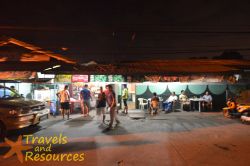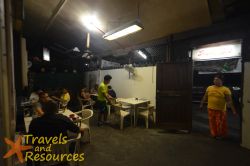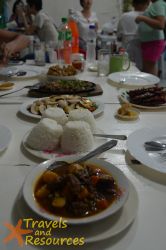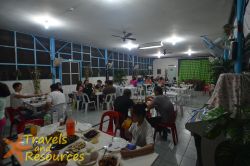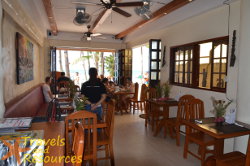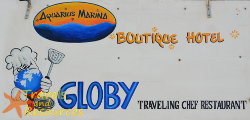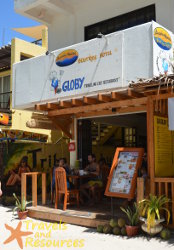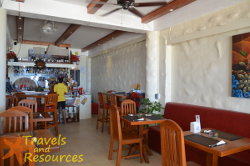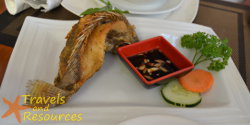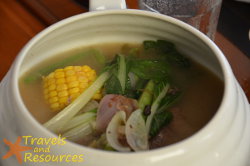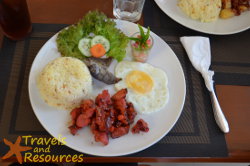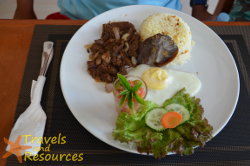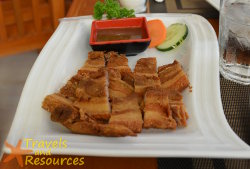Rose and Grace Restaurant
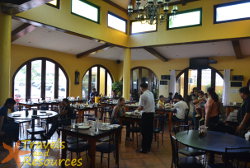
People say that there are two types of the travelers in this world. The first is the one who enjoys himself at the end of the journey, while the second one is the type who enjoys the journey itself.
If you happen to be the second type of traveler, then you most likely would have dined at Rose and Grace Restaurant on your way up to Tagaytay.
Table of Contents
First Type
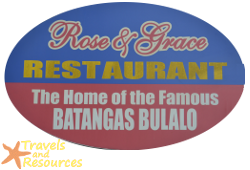
If you are the first type of traveler, you most likely woke up at the crack of dawn and had a ham sandwich for a quick breakfast.
Then after gargling with mouthwash, you hopped in your Sport Utility Vehicle, or SUV, and drove like mad all the way up to Tagaytay.
Its only upon arriving at Tagaytay that you finally took the time to relax in a lounge chair with a hot cup of Barako coffee and the day’s newspaper as you enjoyed the breathtaking view of Taal Volcano and its lake.
Second Type
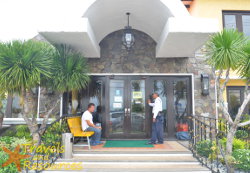
Now if you are the second type of traveler, you most likely would have woken up at eight in the morning to have a hearty breakfast composed of Tocilog, or Tocino, sunny side eggs, and garlic fried rice. You would have sipped a mug of freshly brewed Batangas Barako coffee while leisurely reading the day’s newspaper while listening to the birds chirp in your garden.
You would have left home at half past nine and taken a leisurely drive to Tagaytay. But before making the final climb, decided to make a stopover at Rose and Grace Restaurant for lunch.
And it is only after stuffing yourself with an assortment of seafood and washing it down with hot Bulalo soup that you have second thoughts about continuing with your trip because sleep is calling you more than Tagaytay is.
Dining Area
Regardless of whether you are the first or second type of traveler, stopping over at Rose and Grace Restaurant is generally a good idea.
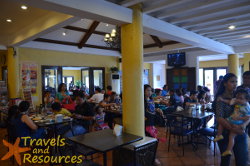
It’s one of the secrets of people who travel to Tagaytay. But if one were to look at the fully occupied tables, it looks like it is a very poorly kept secret.
Instead of the usual tables seating two to four people, the ones in Rose and Grace are clustered to group six or more people so families and friends can sit together.
Now if you think that grouping tables together results in packing people like sardines, you’re in for a treat. Rose and Grace Restaurant is one of the few places that actually spread out their tables. The effect is that diners don’t feel like contortionists that navigate a tight maze just to move around.
Parking
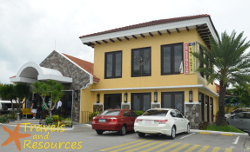
There is space for twelve vehicles or so and is totally free for diners. There was actually more parking before, but thanks to the large number of diners, the restaurant was expanded at the expense of less parking.
These slots are adequate during off-peak hours but during lunch and dinner, you may find yourself without a spot. Thanks to the neighboring Paseo de Roxas, additional parking can be had by simply crossing the street.
The only catch is that the parking here isn’t free, but at PhP10, it isn’t so bad. In fact, it’s even cheaper than the tip most people give security guards stationed at parking lots.
Food
The food is predominantly Filipino, with a good selection of seafood. And while you can order food from the comfort of your seat, it is best to hop on over to the display area to pick out the fresh catch of the day.
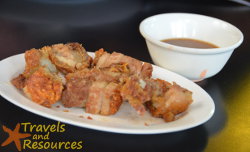
I also suggest coming in at least half an hour before lunch and dinner because the Shrimp and Squid are the first to go. When we arrived, there were only eight large pieces of shrimp left on the display tray. And since each dish is composed of large ones, our two orders were the last to be taken for them.
Now if you find yourself out of Shrimp and Squid, the second favorite item on the menu is fish. For this you normally have three dishes to choose from. There will be something for everyone with choices being fried, steamed, or served in soup.
If you are looking for a balanced diet, vegetables in the form of Chopsuey, Pakbet, and Laing are available. The best seller is the Chopsuey, probably because you can’t really go wrong with this dish.
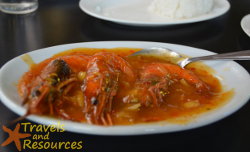
For those of you who are carnivores, you can dine on the grilled Liempo or Pork Chops. You can also try out the Lechon Kawali, which we chose as our viand. The order we get was just right, with the meat being tender and the skin crunchy. The Lechon Saucy, or gravy, definitely helped as we took turns dipping each cut before eating it with our plain rice.
Since the restaurant bills itself as the home of the famous Batangas Bulalo, or Batangas Beef Shank, you’ll practically find a bowl of it on every table. While the beef itself is finite, the amount of soup is practically infinite because it is refillable.
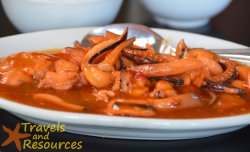
Now if you don’t want a whole order of Bulalo and prefer only the soup, you’ve come to the right place. Just ask the waiter and he’ll be right back with a thermos of Bulalo soup. Not only is it hot and tasty, it is completely free and refillable!
After pouring the soup on his rice, my nephew completely ignored the rest of his food. In fact, he liked it so much that he wants to celebrate his birthday here instead of the more common fast food places around Metro Manila.
Prices
The average cost of a dish is between PhP200 to PhP300. Considering the restaurant is located in the province, it is a bit steep.
Our order of two Shrimps, one Lechon Kawali, one Pakbet, and Chopsuey, For four adults and a child, our bill amounted to a little under PhP1,500, including two soft drinks. Without allotting any amount to my nephew, this puts the cost at PhP375 per adult.
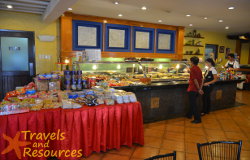
The nice thing is if you will be going in a group of five or more, you get to spread around the cost to lower the contribution of each person. It is probably one of the reasons why couples are a rare sight.
At this point, I am assuming that the bigger question in your mind is whether the food it worth the price, correct?
Well, the short answer to this is that it depends. As far as I am concerned, dishes such as the Shrimp are certainly worth the price. Buying Shrimp of a similar size from the market will cost you a lot more than the tag price. And when you factor in the ingredients, cooking gas, and time, the price begins to look like a bargain.
For my co-workers, it is the soup that provides them great value. Specifically the ones with fish heads because they swear it is the tastiest part of the fish. And since the fish being served is relatively fresh, their taste buds are treated to the richest flavor possible.
In the case of my friends, they are more than happy to walk away after stuffing themselves with the Bulalo. Just like my nephew, the unlimited soup added to several cups of rice is already a meal in itself.
Final Thoughts
Like I mentioned earlier, Rose and Grace Restaurant is one of the worst kept secrets because quite a bit of people can be found making pit stops here.
The food is enough to satisfy the average craving for Filipino dishes. And while prices may initially look steep, some of the dishes are actually cheaper to buy preparing them yourself.
So if you see yourself as the traveler who enjoys the end of the trip or one who relishes the journey, consider stopping by Rose and Grace Restaurant before climbing up to Tagaytay. You just might end up being a third type, which is the traveler who just wants to go back home and sleep after such a hearty meal.
Till the next time, keep your appetites up, camera batteries fully charged, and your memory free because you may need them for the next place you visit!

